Tiebin Mi
Fair Beam Synthesis and Suppression via Transmissive Reconfigurable Intelligent Surfaces
Nov 04, 2024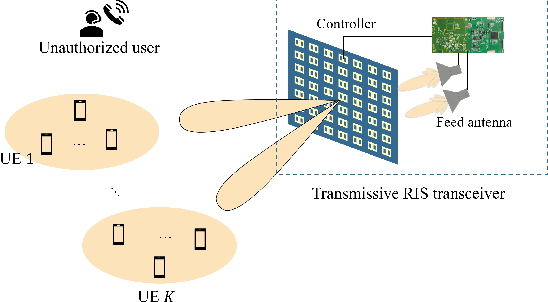
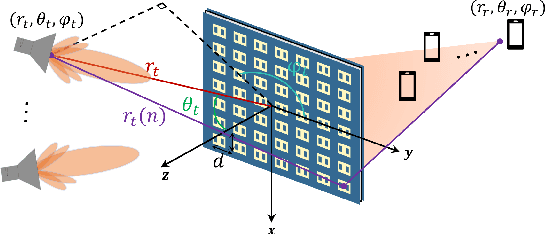
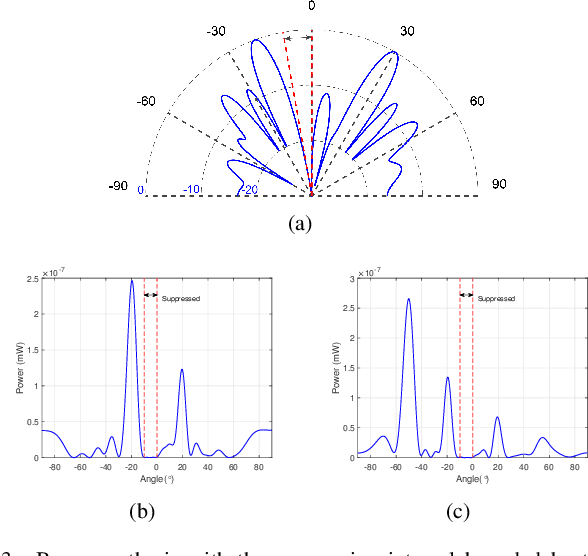
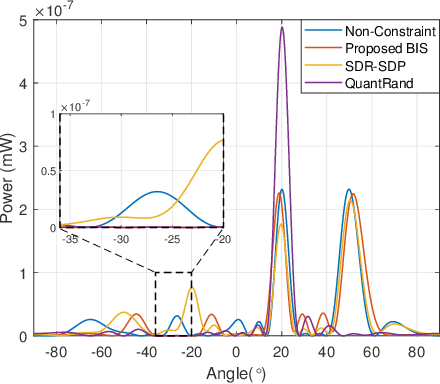
Abstract:Existing phase optimization methods in reconfigurable intelligent surfaces (RISs) face significant challenges in achieving flexible beam synthesis, especially for directional beam suppression. This paper introduces a Max-min criterion incorporating non-linear constraints, utilizing optimization techniques to enable multi-beam enhancement and suppression via transmissive RISs. A realistic model grounded in geometrical optics is first presented to characterize the input/output behavior of transmissive RIS, effectively linking explicit beam-forming operations with practical implementation. Subsequently, a highly efficient bisection-based algorithm for constrained Max-min optimization involving quadratic forms is developed, utilizing an auxiliary variable and Moreau envelope to iteratively reach the optimal solution. This approach demonstrates excellent extensibility and is applicable to a wide range of constrained Max-min problems. Numerical simulations validate the proposed methods, confirming that the framework enables beam enhancement or suppression at designated spatial positions.
TRIS-HAR: Transmissive Reconfigurable Intelligent Surfaces-assisted Cognitive Wireless Human Activity Recognition Using State Space Models
Oct 03, 2024



Abstract:Human activity recognition (HAR) using radio frequency (RF) signals has garnered considerable attention for its applications in smart environments. However, traditional systems often struggle with limited independent channels between transmitters and receivers, multipath fading, and environmental noise, which particularly degrades performance in through-the-wall scenarios. In this paper, we present a transmissive reconfigurable intelligent surface (TRIS)-assisted through-the-wall human activity recognition (TRIS-HAR) system. The system employs TRIS technology to actively reshape wireless signal propagation, creating multiple independent paths to enhance signal clarity and improve recognition accuracy in complex indoor settings. Additionally, we propose the Human intelligence Mamba (HiMamba), an advanced state space model that captures temporal and frequency-based information for precise activity recognition. HiMamba achieves state-of-the-art performance on two public datasets, demonstrating superior accuracy. Extensive experiments indicate that the TRIS-HAR system improves recognition performance from 85.00% to 98.06% in laboratory conditions and maintains high performance across various environments. This approach offers a robust solution for enhancing RF-based HAR, with promising applications in smart home and elderly care systems.
TRGR: Transmissive RIS-aided Gait Recognition Through Walls
Jul 31, 2024



Abstract:Gait recognition with radio frequency (RF) signals enables many potential applications requiring accurate identification. However, current systems require individuals to be within a line-of-sight (LOS) environment and struggle with low signal-to-noise ratio (SNR) when signals traverse concrete and thick walls. To address these challenges, we present TRGR, a novel transmissive reconfigurable intelligent surface (RIS)-aided gait recognition system. TRGR can recognize human identities through walls using only the magnitude measurements of channel state information (CSI) from a pair of transceivers. Specifically, by leveraging transmissive RIS alongside a configuration alternating optimization algorithm, TRGR enhances wall penetration and signal quality, enabling accurate gait recognition. Furthermore, a residual convolution network (RCNN) is proposed as the backbone network to learn robust human information. Experimental results confirm the efficacy of transmissive RIS, highlighting the significant potential of transmissive RIS in enhancing RF-based gait recognition systems. Extensive experiment results show that TRGR achieves an average accuracy of 97.88\% in identifying persons when signals traverse concrete walls, demonstrating the effectiveness and robustness of TRGR.
Toward Wireless Localization Using Multiple Reconfigurable Intelligent Surfaces
Jul 30, 2024Abstract:This paper investigates the capabilities and effectiveness of backward sensing centered on reconfigurable intelligent surfaces (RISs). We demonstrate that the direction of arrival (DoA) estimation of incident waves in the far-field regime can be accomplished using a single RIS by leveraging configurational diversity. Furthermore, we identify that the spatial diversity achieved through deploying multiple RISs enables accurate localization of multiple power sources. Physically accurate and mathematically concise models are introduced to characterize forward signal aggregations via RISs. By employing linearized approximations inherent in the far-field region, the measurement process for various configurations can be expressed as a system of linear equations. The mathematical essence of backward sensing lies in solving this system. A theoretical framework for determining key performance indicators is established through condition number analysis of the sensing operators. In the context of localization using multiple RISs, we examine relationships among the rank of sensing operators, the size of the region of interest (RoI), and the number of elements and measurements. For DoA estimations, we provide an upper bound for the relative error of the least squares reconstruction algorithm. These quantitative analyses offer essential insights for system design and optimization. Numerical experiments validate our findings. To demonstrate the practicality of our proposed RIS-centric sensing approach, we develop a proof-of-concept prototype using universal software radio peripherals (USRP) and employ a magnitude-only reconstruction algorithm tailored for this system. To our knowledge, this represents the first trial of its kind.
Dreamer: Dual-RIS-aided Imager in Complementary Modes
Jul 20, 2024Abstract:Reconfigurable intelligent surfaces (RISs) have emerged as a promising auxiliary technology for radio frequency imaging. However, existing works face challenges of faint and intricate back-scattered waves and the restricted field-of-view (FoV), both resulting from complex target structures and a limited number of antennas. The synergistic benefits of multi-RIS-aided imaging hold promise for addressing these challenges. Here, we propose a dual-RIS-aided imaging system, Dreamer, which operates collaboratively in complementary modes (reflection-mode and transmission-mode). Dreamer significantly expands the FoV and enhances perception by deploying dual-RIS across various spatial and measurement patterns. Specifically, we perform a fine-grained analysis of how radio-frequency (RF) signals encode scene information in the scattered object modeling. Based on this modeling, we design illumination strategies to balance spatial resolution and observation scale, and implement a prototype system in a typical indoor environment. Moreover, we design a novel artificial neural network with a CNN-external-attention mechanism to translate RF signals into high-resolution images of human contours. Our approach achieves an impressive SSIM score exceeding 0.83, validating its effectiveness in broadening perception modes and enhancing imaging capabilities. The code to reproduce our results is available at https://github.com/fuhaiwang/Dreamer.
Optimal Beamforming of RIS-Aided Wireless Communications: An Alternating Inner Product Maximization Approach
May 10, 2024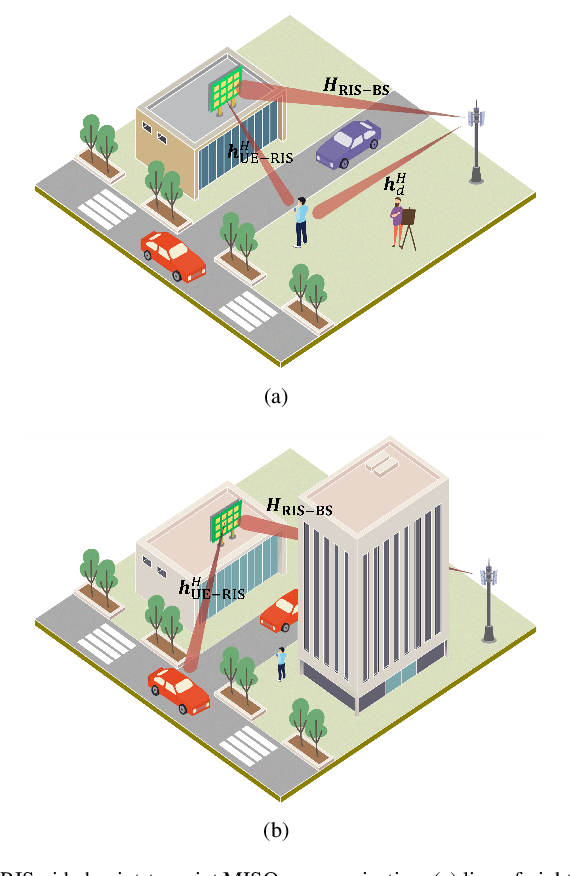
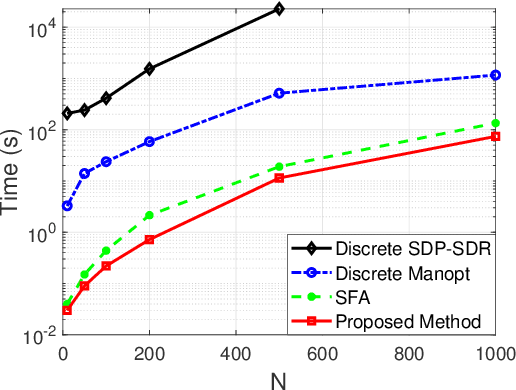
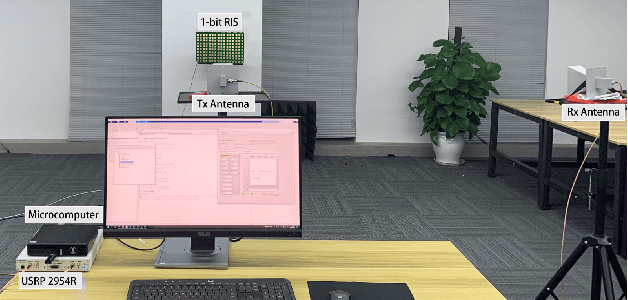
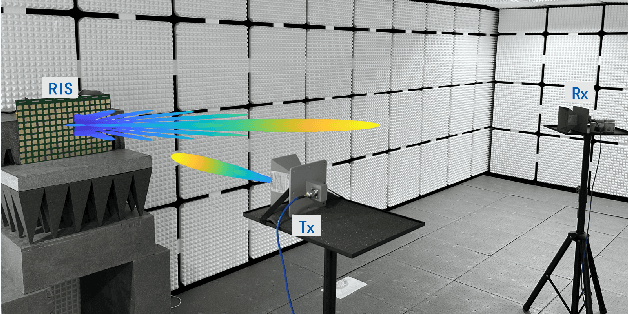
Abstract:This paper investigates a general discrete $\ell_p$-norm maximization problem, with the power enhancement at steering directions through reconfigurable intelligent surfaces (RISs) as an instance. We propose a mathematically concise iterative framework composed of alternating inner product maximizations, well-suited for addressing $\ell_1$- and $\ell_2$-norm maximizations with either discrete or continuous uni-modular variable constraints. The iteration is proven to be monotonically non-decreasing. Moreover, this framework exhibits a distinctive capability to mitigate performance degradation due to discrete quantization, establishing it as the first post-rounding lifting approach applicable to any algorithm intended for the continuous solution. Additionally, as an integral component of the alternating iterations framework, we present a divide-and-sort (DaS) method to tackle the discrete inner product maximization problem. In the realm of $\ell_\infty$-norm maximization with discrete uni-modular constraints, the DaS ensures the identification of the global optimum with polynomial search complexity. We validate the effectiveness of the alternating inner product maximization framework in beamforming through RISs using both numerical experiments and field trials on prototypes. The results demonstrate that the proposed approach achieves higher power enhancement and outperforms other competitors. Finally, we show that discrete phase configurations with moderate quantization bits (e.g., 4-bit) exhibit comparable performance to continuous configurations in terms of power gains.
Wireless Regional Imaging through Reconfigurable Intelligent Surfaces: Passive Mode
Nov 19, 2023Abstract:In this paper, we propose a multi-RIS-aided wireless imaging framework in 3D facing the distributed placement of multi-sensor networks. The system creates a randomized reflection pattern by adjusting the RIS phase shift, enabling the receiver to capture signals within the designated space of interest (SoI). Firstly, a multi-RIS-aided linear imaging channel modeling is proposed. We introduce a theoretical framework of computational imaging to recover the signal strength distribution of the SOI. For the RIS-aided imaging system, the impact of multiple parameters on the performance of the imaging system is analyzed. The simulation results verify the correctness of the proposal. Furthermore, we propose an amplitude-only imaging algorithm for the RIS-aided imaging system to mitigate the problem of phase unpredictability. Finally, the performance verification of the imaging algorithm is carried out by proof of concept experiments under reasonable parameter settings.
Wireless Communications in Cavity: A Reconfigurable Boundary Modulation based Approach
Nov 15, 2023



Abstract:This paper explores the potential wireless communication applications of Reconfigurable Intelligent Surfaces (RIS) in reverberant wave propagation environments. Unlike in free space, we utilize the sensitivity to boundaries of the enclosed electromagnetic (EM) field and the equivalent perturbation of RISs. For the first time, we introduce the framework of reconfigurable boundary modulation in the cavities . We have proposed a robust boundary modulation scheme that exploits the continuity of object motion and the mutation of the codebook switch, which achieves pulse position modulation (PPM) by RIS-generated equivalent pulses for wireless communication in cavities. This approach achieves around 2 Mbps bit rate in the prototype and demonstrates strong resistance to channel's frequency selectivity resulting in an extremely low bit error rate (BER).
Robust and Communication-Efficient Federated Domain Adaptation via Random Features
Nov 08, 2023Abstract:Modern machine learning (ML) models have grown to a scale where training them on a single machine becomes impractical. As a result, there is a growing trend to leverage federated learning (FL) techniques to train large ML models in a distributed and collaborative manner. These models, however, when deployed on new devices, might struggle to generalize well due to domain shifts. In this context, federated domain adaptation (FDA) emerges as a powerful approach to address this challenge. Most existing FDA approaches typically focus on aligning the distributions between source and target domains by minimizing their (e.g., MMD) distance. Such strategies, however, inevitably introduce high communication overheads and can be highly sensitive to network reliability. In this paper, we introduce RF-TCA, an enhancement to the standard Transfer Component Analysis approach that significantly accelerates computation without compromising theoretical and empirical performance. Leveraging the computational advantage of RF-TCA, we further extend it to FDA setting with FedRF-TCA. The proposed FedRF-TCA protocol boasts communication complexity that is \emph{independent} of the sample size, while maintaining performance that is either comparable to or even surpasses state-of-the-art FDA methods. We present extensive experiments to showcase the superior performance and robustness (to network condition) of FedRF-TCA.
Codebook Configuration for 1-bit RIS-aided Systems Based on Implicit Neural Representations
Jun 01, 2023Abstract:Reconfigurable intelligent surfaces (RISs) have become one of the key technologies in 6G wireless communications. By configuring the reflection beamforming codebooks, RIS focuses signals on target receivers. In this paper, we investigate the codebook configuration for 1-bit RIS-aided systems. We propose a novel learning-based method built upon the advanced methodology of implicit neural representations. The proposed model learns a continuous and differentiable coordinate-to-codebook representation from samplings. Our method only requires the information of the user's coordinate and avoids the assumption of channel models. Moreover, we propose an encoding-decoding strategy to reduce the dimension of codebooks, and thus improve the learning efficiency of the proposed method. Experimental results on simulation and measured data demonstrated the remarkable advantages of the proposed method.
 Add to Chrome
Add to Chrome Add to Firefox
Add to Firefox Add to Edge
Add to Edge